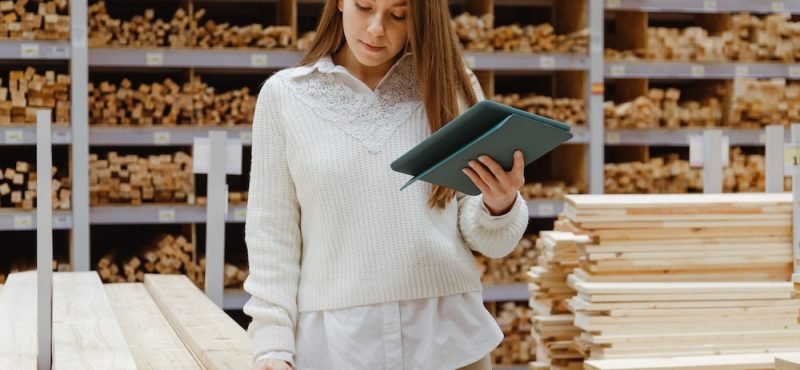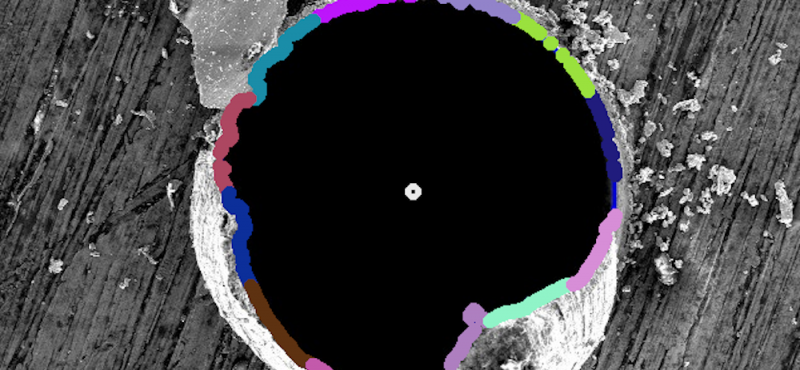Computer Vision can be extremely helpful in detecting quality anomalies, as it enables the automation of quality control processes, providing faster, more accurate, and more consistent results compared to manual inspection methods.
This helps ensure that products meet quality standards and reduces the risk of customer complaints or product returns. In addition, computer vision can also be used to monitor production processes and provide real-time feedback to operators, enabling them to quickly address and correct any issues before they result in defective products.
By analysing images of the wood flooring and identifying features that are indicative of quality anomalies, computer vision algorithms can quickly and accurately detect anomalies that might be difficult or time-consuming to identify manually.
Overall, computer vision has the potential to significantly improve the accuracy and efficiency of quality control processes in the wood flooring industry, helping to ensure that high-quality products are produced consistently and reducing the cost and time associated with manual inspection methods.

The accuracy and effectiveness of the model will depend on the quality and quantity of the annotated data used to train it.

The accuracy and effectiveness of computer vision models depend heavily on the quality and quantity of annotated data used to train them. Annotation provides the model with labeled information about the objects, features, and attributes present in an image or video, allowing the model to learn how to identify and classify these elements.
In the context of quality control, data annotation can be used to ensure that the images or videos used for training represent real-world scenarios and that the annotated data accurately reflects the features and attributes of interest. Proper data annotation can also help to mitigate issues such as overfitting or bias in the model, as well as improve its performance and accuracy.
In summary, data annotation plays a critical role in the development and success of computer vision models used for quality check by providing labeled information that enables the model to learn and make accurate predictions.
To annotate images for training a wood floor classification model to detect quality exceptions, the following steps should be taken:
By following these steps, you can create a high-quality annotated dataset that can be used to train a wood floor classification model that accurately detects quality exceptions.

Machine learning models are not the only choice in many industrial applications we can use OpenCV framework with is is an open-source computer vision library that provides a number of functions for image processing and computer vision tasks, including anomaly detection.
To detect anomalies in wood floor images using OpenCV, we need to pre-process images. This will make it easier to apply computer vision algorithms and reduce the computation time. One of the widely used pipeline in processing data is this:
By following these steps, you can use OpenCV’s functions to detect anomalies in wood floor images and classify them based on their size and shape.
As you can see Computer vision plays a crucial role in quality control by automating the inspection process and providing fast and accurate results, this helps to ensure that products meet quality standards. But to achieve the good results no matter what will be the final technology data annotation is a crucial step in this process.
Annotated data is used to train the machine learning algorithms that are used in the inspection process. The quality of the annotations, including their accuracy and consistency, directly impacts the performance of the algorithms. Therefore, it is essential to invest time and resources into obtaining high-quality annotated data to ensure the success of the computer vision-based quality control system.
Data annotation experts can help to ensure the data is representative of the types of anomalies that need to be detected in the real-world, ensuring that the algorithms are trained on a diverse range of examples. We can also provide quality assurance to ensure that the annotations are accurate and consistent, which is essential for achieving accurate and reliable results from the machine learning algorithms.
In addition, our data annotation experts can help to optimize the data annotation process by selecting appropriate tools and techniques, and by providing training and support to other team members who may be involved in the data annotation process.
Overall, the expertise of our data annotation experts is essential for ensuring the success of computer vision-based quality control systems, as they provide the high-quality annotated data that is necessary for accurate and reliable results!